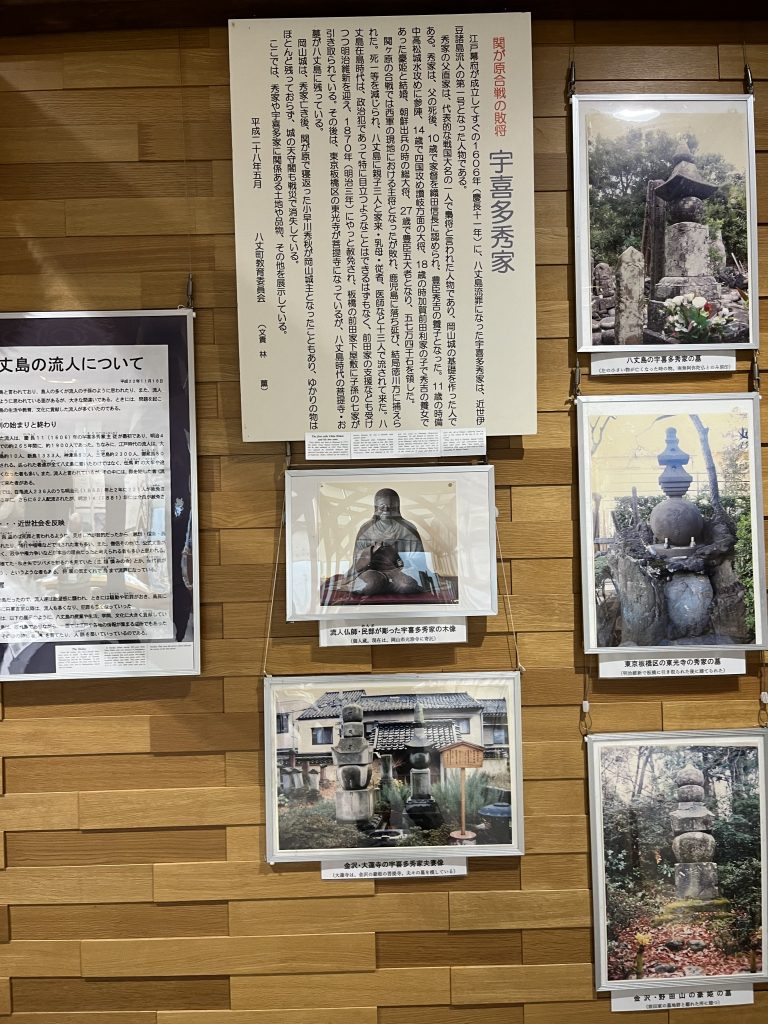I visited Hachijojima for the first time at the end of October. It was only a 50-minute flight from Haneda. When I landed at the airport, which is located at the narrow part of the island, it was raining so hard that it literally looked like an overturned bucket. Unable to go to the ocean or the mountains, I was guided by islanders to the Hachijojima History and Folklore Museum.
Hachijojima is historically known as an island of exiles. The Kuroshio Current, which hits the island directly depending on the season, is said to flow at a speed of 2 meters per second at its fastest. This creates a natural barrier that makes it difficult for people to return to the mainland once they are washed ashore.
One might think that the drifters are evil, unscrupulous people who must have committed violent acts on the island, and that the islanders must have had a hard time. However, this is not the case on Hachijojima. One only has to look at the graves to see that. The islanders and the exiles are buried on the same site, with no distinction made. Hachijojima’s openness and acceptance of others is still alive and well. The openness of Hachijo-jima to accept others is still alive and well today.
The exhibition in the museum clearly shows that Hachijo’s identity is as an island of exiles. About one-third of the exhibition space is devoted to introduction of the exiles.
The most famous of these is Ukita Hideie, known as the “founder of the exiles.” He was highly valued by Toyotomi Hideyoshi and fought as a general in the Korean invasion and as a vice general of the Western Army in the Battle of Sekigahara. After his defeat at Sekigahara, he fled to Satsuma, but was extradited by Ieyasu and exiled to Hachijojima in 1606.

The photo shows the corner introducing Hideie. According to the explanatory text, Hideie was not exiled alone, but was treated well in being accompanied by a total of 13 people, including his families, retainers, nanny, attendants, and a doctor. In 1616, his relatives recommended him to go back to the mainland as a feudal lord, but he chose to stay on Hachijo. He lived here for about 50 years until his death in 1655. A magnificent statue of Hideie stands alongside his wife at a spot overlooking the island’s ocean.
Why have the people of Hachijojima accepted exiles without discrimination? One reason is that the exiles were carriers of new technology and culture. For example, it was the exiles who brought sweet potato plants to the island, where food was scarce, as well as methods for cultivating them and techniques for making shochu from them. For the islanders, the exiles were people who brought technological and cultural innovation to the island.
This is symbolized by the Kashidate dance still performed in the area. The dance is a medley of dances from Kyoto, Hiroshima, and other places. It is thought that the dances of exiles who came from various regions and places were added to the original Hachijojima dances.
The point, however, is that unlike the original dances, they have been considerably “Hachijo-ized.” There is no musical score for or accompaniment to the songs. The dances are performed by individuals imitating the dancing of others whom they consider to be good, so gradual transformation can easily occur. One of the Hachijo people said to me, “Rita(altruism) means being a member of the community, after all”. I thought I saw something interesting about Hachijo in a form of folklore that prioritizes individuality over maintenance of a pattern.
A second reason is that the meaning of “crime” was different in the past than it is today. A guide at the museum told us as follows when standing in front of a panel about a man who was exiled after killing another man’s son in an act of revenge. “In the old people’s sense, the person who took revenge may have done wrong to the person avenged, but not to anyone else”. In other words, the islanders did not consider the exiles to be absolutely evil, but only guilty in relation to the person against whom they committed the criminal act.
Howard Zehr, in Changing Lenses: A New Focus for Crime and Justice, critically points out that in modern times, crime is viewed as “an offense against the law.” In other words, the focus of the judicial process today is on what law has been violated and the sentence is determined accordingly, with little regard for the actual suffering inflicted on the victim or what is needed to repair the relationship between victim and offender. (Zehr’s book is based on European cases, but it is meaning to understanding the Japanese case).
Put another way, what is required of perpetrators today is “accountability to the law,” not “responsibility toward the victims.” However, Zehr points out that the punishment imposed to fulfill accountability to the law does not necessarily make the lives of perpetrators and victims better. What is needed, he says, is a judicial approach that restores the relationship between the victim and the perpetrator of the suffering.
I don’t think that Zehr’s restorative justice is exactly the way the people of Hachijo used to think about the exiles’ wrongdoings. However, being a member of the community seems to be closely related to this “taking on responsibility.” It may be a situation rather like membership in a band – something we have often discussed in the Center’s workshops. Music is being created as each member plays his or her own role in the band. I thought about this while walking through a forest carpeted with lichen the day after it rained.

